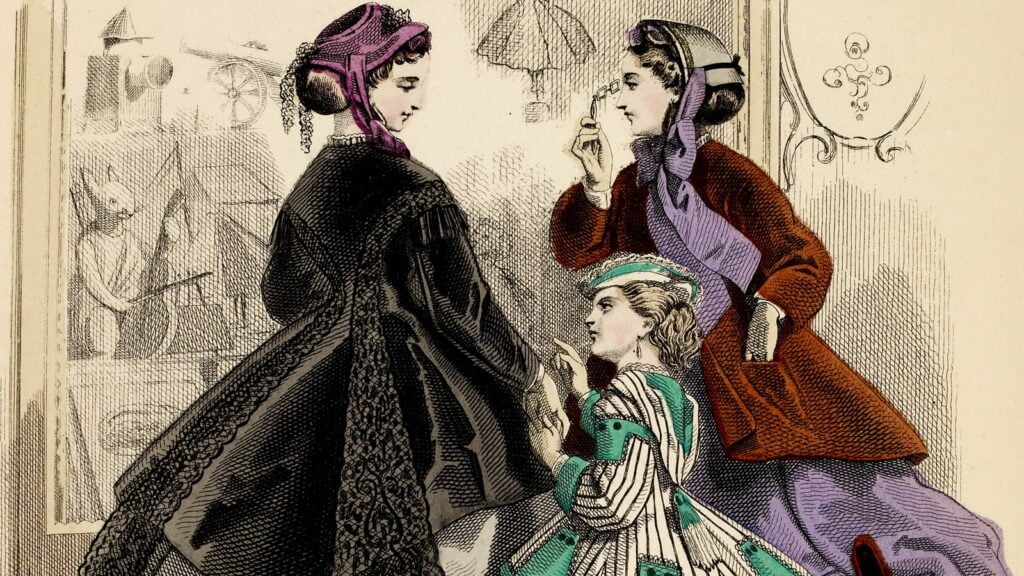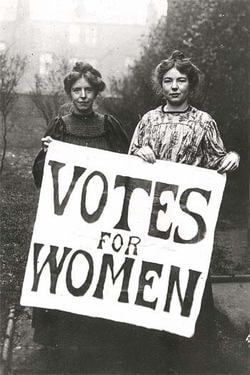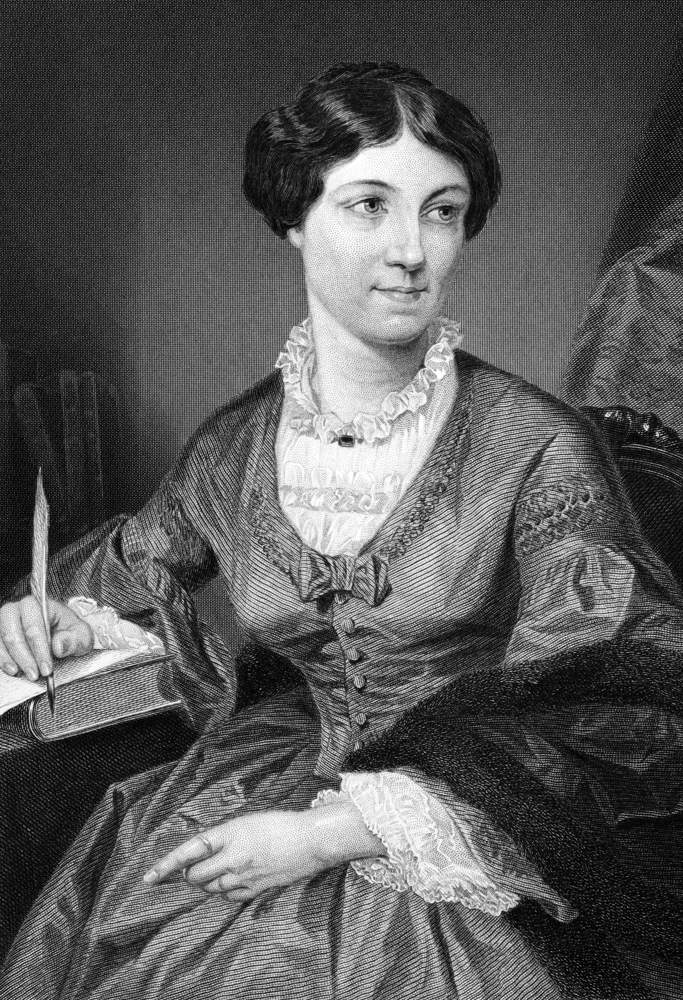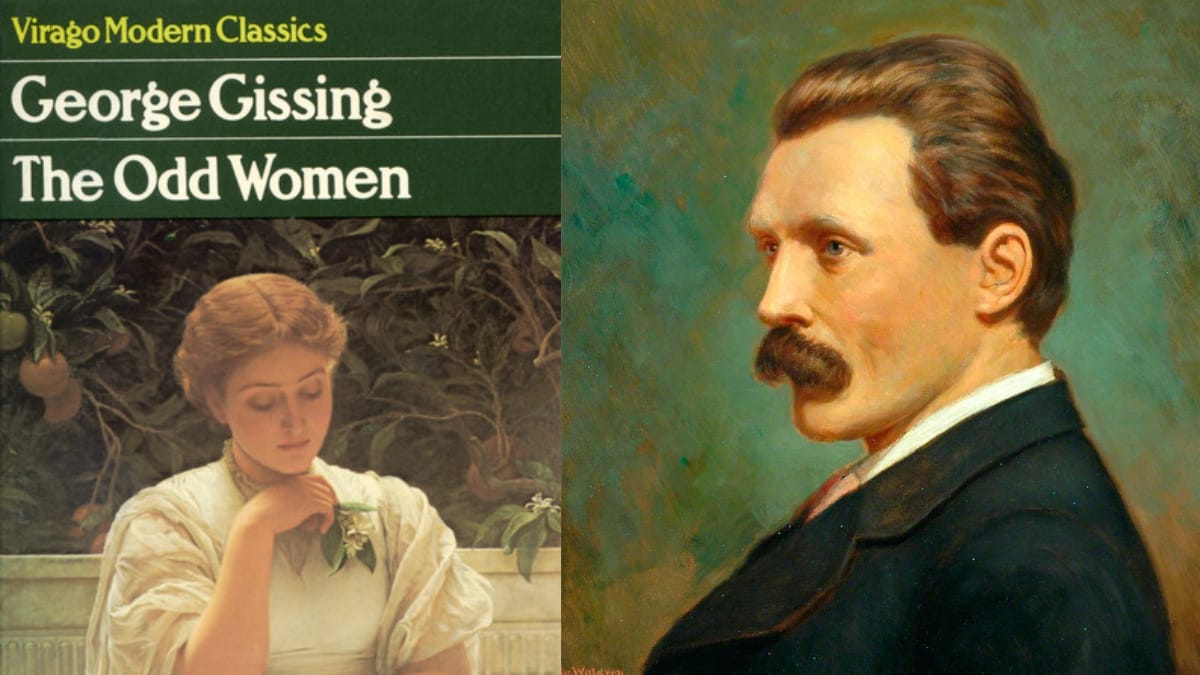The Odd Women by George Gissing was published in 1893 and focused on the conditions of unmarried, educated women (referred to as ‘odd women’ in the context of the novel) in Victorian society. The novel explored the challenges and limitations faced by women during that time, including issues of gender roles, marriage, economic independence, and the struggle to find a place in a society that often viewed women primarily in relation to marriage and motherhood.

In George Gissing’s novel The Odd Women, the author skillfully explores the challenges faced by women who deviate from traditional gender norms. These women, aptly termed ‘odd women’, are perceived as deviant by a society that struggles to accommodate their uniqueness. This article delves into the central themes of the novel and argues that labeling these women as deviant is not only unjust but also hinders societal progress. Instead, their diversity must be embraced and the strength and resilience of these women must be celebrated.
The plight of the ‘odd women’
The Odd Women centers around the lives of intelligent and independent women in late 19th-century England who find themselves without a suitable male partner due to a gender imbalance. The novel highlights how society has constructed rigid gender roles, expecting women to conform to prescribed norms of marriage and motherhood. Consequently, women who choose alternative paths are often considered outsiders or ‘odd’.
The term ‘odd women’ itself is problematic, implying abnormality or deviance from the norm. By labeling them as such, society marginalises these women, hindering their potential to lead fulfilling lives and contribute to their communities. The novel challenges us to question why these women are seen as odd instead of being appreciated for their unique perspectives and abilities.
The term ‘odd women’ itself is problematic, implying abnormality or deviance from the norm. By labeling them as such, society marginalises these women, hindering their potential to lead fulfilling lives and contribute to their communities. The novel challenges us to question why these women are seen as odd instead of being appreciated for their unique perspectives and abilities.
The struggle for acceptance
In The Odd Women, the protagonists face societal pressures to conform, and their struggles parallel the experiences of many women in reality. These women are often dismissed, ridiculed, or forced into conformity, which stifles their individuality and potential. The novel confronts us with the question: Should we value uniformity over embracing the diverse talents and aspirations of all individuals?

By labeling these women as deviant, society disregards their worth and the contributions they can make. We must recognise that the value of a person lies not in fitting the mold but in their capacity to enrich our world through their unique qualities and passions.
Breaking free from gender stereotypes
One of the most potent themes in The Odd Women is the idea that women should not be bound by traditional gender roles. The novel challenges the notion that a woman’s primary purpose is to be a wife and mother, advocating instead for women’s independence and the pursuit of their passions and ambitions.
Moreover, the novel highlights that being an ‘odd woman’ is not a flaw but rather a reflection of the inadequacy of society’s rigid gender norms. It urges society to embrace diversity, to let go of judgment, and to appreciate each person’s individual journey.
Promoting an inclusive society
To build a truly progressive and inclusive society, the ‘odd women’ as well as all individuals who deviate from societal norms must be celebrated. This means challenging one’s own prejudices and assumptions and creating an environment that fosters acceptance and growth.
Instead of treating these women as outcasts, they should be recognised and celebrated for their resilience, courage, and determination to forge their paths in the face of adversity. By doing so, doors are opened to new perspectives, innovative ideas, and positive change.
Instead of treating these women as outcasts, they should be recognised and celebrated for their resilience, courage, and determination to forge their paths in the face of adversity. By doing so, doors are opened to new perspectives, innovative ideas, and positive change.
However, the arguments of the novel become more challenging when we try to fit it in the lens of societal perspectives. The Odd Women has come to be perceived as more detrimental than positive for society because it might go against their set of roles and dismiss the existing stereotypical roles which could challenge the stigma that attach to women. This article highlights the specific factors contributing to this negative connotation.

One of the key factors contributing to the negative connotation of The Odd Women is the reinforcement of traditional gender stereotypes. While the novel highlights the struggles faced by women in a patriarchal society, it also depicts some of the female characters as weak and dependent on men for their happiness and security. This portrayal inadvertently perpetuates the notion that women are inherently inferior and require male validation for their worth. Consequently, some critics argue that the novel’s depiction of women undermines the fight for gender equality.
The Odd Women explores the challenges faced by educated, single women in their pursuit of independence and self-sufficiency. However, the novel also presents a pessimistic view of women who attempt to break free from societal norms. Characters such as Monica Madden and Virginia Madden, who embrace unconventional lifestyles, are often depicted as unhappy or unfulfilled. This portrayal sends a discouraging message about women’s agency and suggests that stepping outside traditional gender roles leads to unhappiness, thus undermining efforts to encourage women to pursue diverse paths.
The Odd Women primarily focuses on the lives of middle-class white women, largely neglecting the experiences of working-class women and women of color during that period. This limited intersectional representation has contributed to the novel’s negative connotation, as it reinforces the notion that women’s issues are solely relevant to a specific demographic, thereby ignoring the diverse struggles faced by marginalised groups of women.
The Odd Women primarily focuses on the lives of middle-class white women, largely neglecting the experiences of working-class women and women of color during that period. This limited intersectional representation has contributed to the novel’s negative connotation, as it reinforces the notion that women’s issues are solely relevant to a specific demographic, thereby ignoring the diverse struggles faced by marginalised groups of women.
Furthermore, it depicts that the emphasis on marriage as the ultimate goal for women somehow devalues the capability of women. While some female characters resist societal pressure to marry solely for financial security, the novel ultimately presents marriage as a desirable resolution to the struggles faced by the ‘odd women’. This focus on marriage as the primary objective for women can be seen as promoting a limited and outdated view of female aspirations, overshadowing the broader array of goals and ambitions women can pursue.

In conclusion, it can be understood that George Gissing’s The Odd Women is a powerful reminder of the societal pressures that lead to the stigmatisation of individuals who do not conform to traditional norms. The novel calls upon us to question the notion of deviancy and to celebrate diversity in all its forms.
As we move towards a more inclusive future, it is imperative to learn from the lessons of The Odd Women and work together to create a society that embraces and celebrates the uniqueness of each individual. Only by challenging these harmful perceptions can individuals truly progress and build a world that values the contributions of all its members, regardless of whether they are considered ‘odd’ by society’s standards. The Odd Women, therefore, urges readers to break free from the shackles of conformity and welcome a future that is diverse, accepting, and empowering for all.






Waaaaw. Very well-written and thoroughly reviewed article. I was reminded that some of these problems still exist in Indian society, and they are still called odd women.